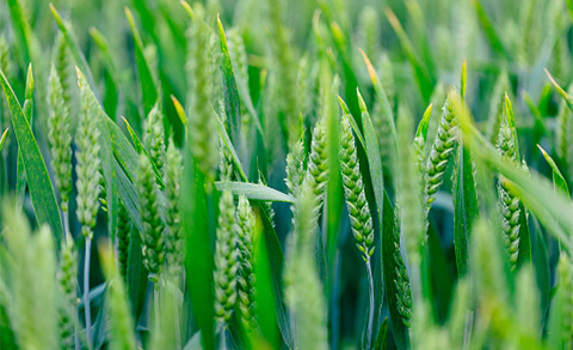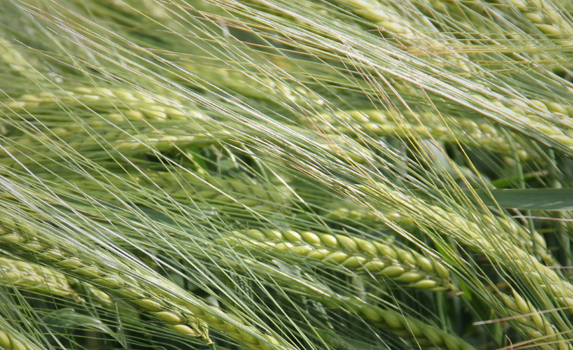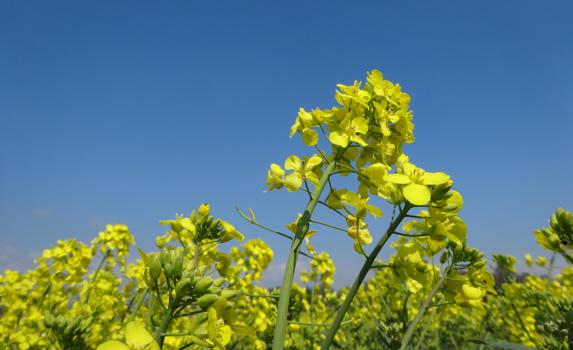
Cropwatch South | June 2021
Blog - 28.06.21
It’s all about preserving green leaf area now. We’ve done everything we can to set up some really great potential in our crops. While the lighter ground still needs some decent rain going forward, the heavy land probably has enough moisture to see most winter drillings through to harvest. Other than late disease, the one thing that will really get in the way is another very hot, dry summer.
Winter Wheat Crops
As expected, wheats have been catching-up fast, moving rapidly through to ear emergence and, imminently, flowering in many cases. Two weeks ago, Septoria was our main concern. But opting for the most curative new chemistry at T2 means we’re well-covered here.
While wheat orange blossom midge is beginning to rear its ugly head, very rapid development looks like getting our earlier-sown wheats safely through to flowering before numbers reach any sort of threshold. More worrying are the later drillings still only at full flag leaf. Because we don’t want to bring any T3s forward from their ideal early-mid flowering timing for fusarium, we won’t hesitate to put in an extra spray wherever we need to deal with this threat.
With the weather turning hotter and drier, we’re heartily glad we didn’t neglect rusts with our flag leaf spray. And not just on Crusoe either. We saw enough brown rust on Graham last season to make us very cautious this time around. And there are plenty of other varieties with decidedly lowly resistance ratings.
Add the fact that the new triazole chemistry isn’t that great on brown rust and we’re looking well beyond fusarium for our fast-approaching T3s, adding pyraclostrobin or benzovindiflupyr to our prothioconazole mainstay wherever we have concerns. Late brown rust can rob an awful lot of green leaf area, cutting short-grain fill in no time flat.
Spring Barley Crops
Green leaf area preservation is also our main spring barley priority as we get their T2s on, with brown rust also a particular target – alongside rynchosporium, of course. Drillings from mid-February right through to the end of March mean a wide range of crop development. Although further ahead, the earlier sowings definitely lost a lot more tillers in the dry April. This means the later-sown crops are looking more promising at the moment. But they have a lot further to go, so the jury is firmly out.
Oil Seed Rape
Our OSR continues to be very exciting despite a surprisingly extended flowering that leaves us doubtful we’ll be harvesting much, if any, before August. As this means such a long gap from mid-flowering, we’ve taken the unusual step of going in with a late-flowering spray of azoxystrobin and cyproconazole on our best crops to prevent alternaria and botrytis compromising green leaf area as humidity builds in the canopy.
This and the extra magnesium and boron we also applied is more than justified by crop potential and prices. It should stand us in particularly good pod fill stead in any dry spell too, helping avoid the disappointment of another small-seeded harvest.

Winter Wheat
Winter WheatSpring Barley Crops
Green leaf area preservation is also our main spring barley priority as we get their T2s on, with brown rust also a particular target – alongside rynchosporium, of course. Drillings from mid-February right through to the end of March mean a wide range of crop development. Although further ahead, the earlier sowings definitely lost a lot more tillers in the dry April. This means the later-sown crops are looking more promising at the moment. But they have a lot further to go, so the jury is firmly out

Spring Barley
Spring BarleyOil Seed Rape
Our OSR continues to be very exciting despite a surprisingly extended flowering that leaves us doubtful we’ll be harvesting much, if any, before August. As this means such a long gap from mid-flowering, we’ve taken the unusual step of going in with a late-flowering spray of azoxystrobin and cyproconazole on our best crops to prevent alternaria and botrytis compromising green leaf area as humidity builds in the canopy.
This and the extra magnesium and boron we also applied is more than justified by crop potential and prices. It should stand us in particularly good pod fill stead in any dry spell too, helping avoid the disappointment of another small-seeded harvest.
Join Our Community

Agrii X
We love engaging with clients and partners. Give us a follow and let's share stories for the community.

Agrii Instagram
A picture paints a thousand words. Follow us on Instagram to see what we are up to.

Agrii LinkedIn
If you are all about the business, connect with us on LinkedIn to build your network
Stay In Touch

Newsletter Sign-Up
Receive a monthly email update on topical news and information from around Agrii and UK Farming.

Listen To Our Podcasts
Listen to the Tramlines Podcast. Fortnightly chat about agriculture and trials with your host Tony Smith.

Find an Event
Have a look at what's coming up and join us for our upcoming events and tours.




